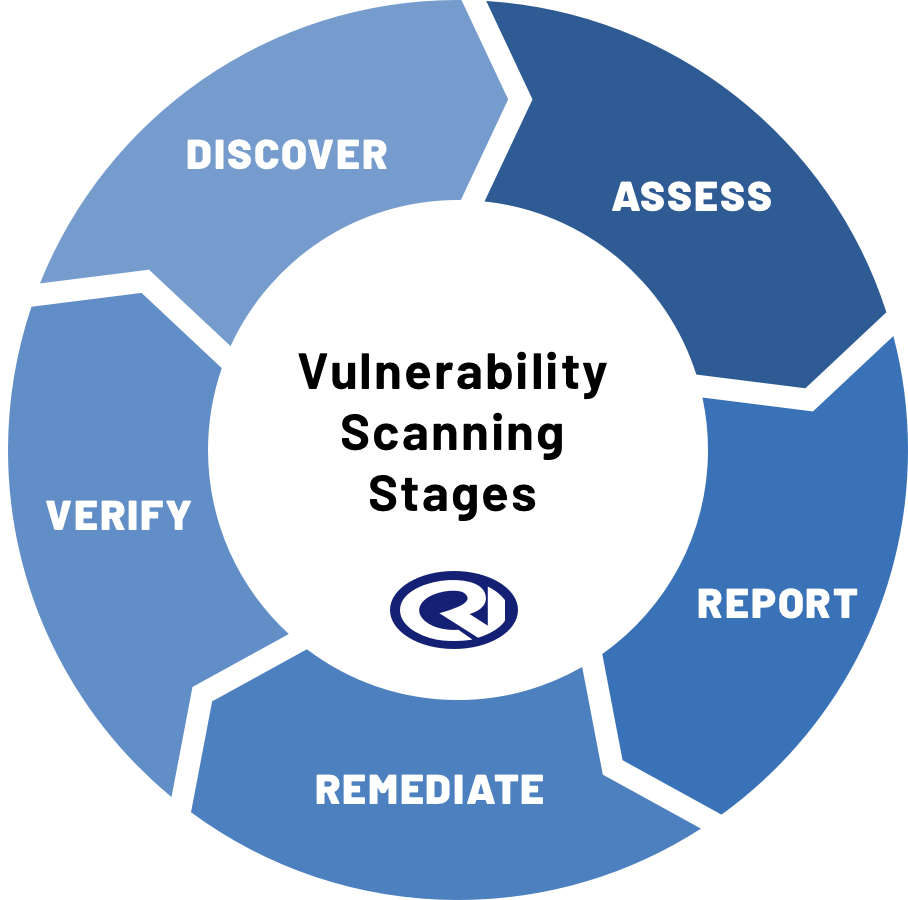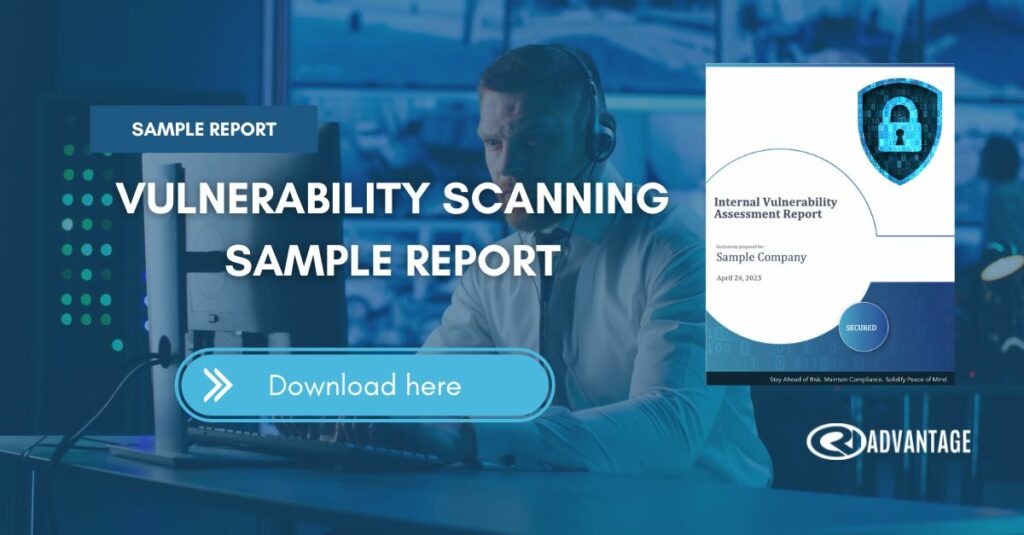v-Scan: Security Foundations
Vulnerability Scanning
Minimize risk exposure with a managed vulnerability scanning service
Vulnerability scanning is an important aspect of an organization’s overall security strategy, as it helps organizations identify and address vulnerabilities before they can be exploited by attackers. Regular vulnerability scanning can also help organizations maintain compliance with industry standards and regulations, such as PCI DSS, HIPAA, FTC and others.
Types of Vulnerability Scans
Network Scans
Identifies possible network security attacks and vulnerable systems on networks
Wireless Scans
Identifies rogue access points and validate that a companv's network is securely configured
Database Scans
Identifies the weak points in a database
Host-based Scans
Finds vulnerabilities in workstations, servers, or other network hosts, and provides visibility into configuration settings and patch history
Application Scans
Detects known software vulnerabilities and mis-configurations in network or web apps
Key Service Benefits
Maintaining your cyber hygiene
Hackers are constantly scanning for weak targets. Our managed vulnerability scanning service will help you to stay on top of cyber hygiene and avoid giving hackers an easy way to compromise your organization.
Providing remediation guidance
Our vulnerability scans include a comprehensive report that details the vulnerabilities discovered, assesses potential impact, and actionable remediation guidance.
Reducing strain on in-house teams
Regular scans and analysis can be time and resource-intensive. We can alleviates the strain of undertaking these activities in-house, allowing your team to focus on addressing vulnerabilities instead of finding them.
Guiding long-term strategy
Working closely alongside your in-house security team, our security professionals can help you develop your long-term security strategy, allocate future security investments and ensure that process compliance.
Our Proactive Approach
Many vulnerabilities are easy to detect and fix. Most software and hardware vendors keep an eye on potential vulnerabilities, writing and releasing patches. But as employees click to ignore these updates or potential vulnerabilities slip through the cracks, you’re opening yourself up to new risk and future losses.
As threats continue to become more complex and targeted, it’s more important than ever to focus your efforts to minimize the risk before it’s too late.

Do you have a complete picture of what is vulnerable within your infrastructure? Download our free sample.
Get a clear picture of what remediation needs to be done to lower your risk of being exploited.
FAQs
Need more information about Vulnerability Scanning? We’ve collected some of the cybersecurity industry’s most frequently asked questions:
Cyber security vulnerability scanning is a process of identifying potential security weaknesses in a network or system. It uses automated tools to scan for vulnerabilities, such as outdated software, unpatched systems, and misconfigured devices. The goal is to detect and prioritize security risks so they can be addressed before they can be exploited by malicious actors.
Vulnerability scanning is a crucial component of a comprehensive cyber security strategy. It helps to identify potential security risks and prevent data breaches and other cyber attacks. By regularly scanning your network and systems, you can ensure that your sensitive information and assets are protected against cyber threats.
The frequency of vulnerability scans depends on several factors, such as the size of your network, the level of risk, and the frequency of changes to your systems. As a general rule, it is recommended to conduct vulnerability scans at least once a quarter or whenever there are significant changes to your network infrastructure.
A vulnerability scan typically provides a detailed report that includes a list of identified vulnerabilities, their severity, and recommendations for remediation. The report also includes a risk assessment that prioritizes the vulnerabilities based on their potential impact and the likelihood of exploitation.
No, vulnerability scanning is designed to be non-intrusive and should not disrupt normal business operations. The scan is conducted remotely, and the scanning process is fast and efficient, minimizing any impact on your network performance.
While vulnerability scanning is an important component of a comprehensive cyber security strategy, it is not enough to fully protect your business from cyber threats. It should be used in conjunction with other security measures, such as firewalls, encryption, access controls, and regular software updates.



